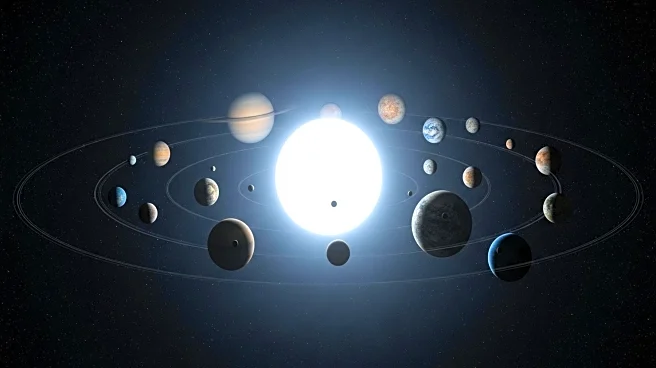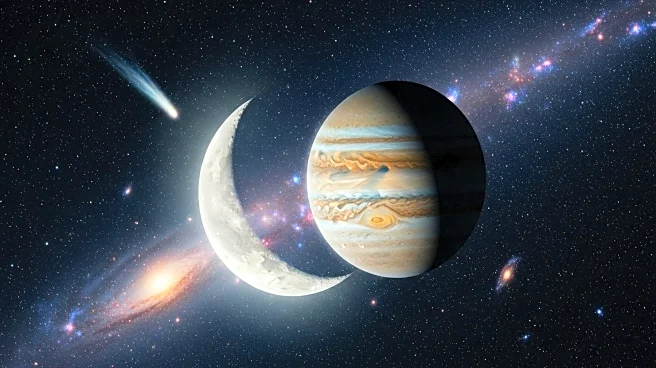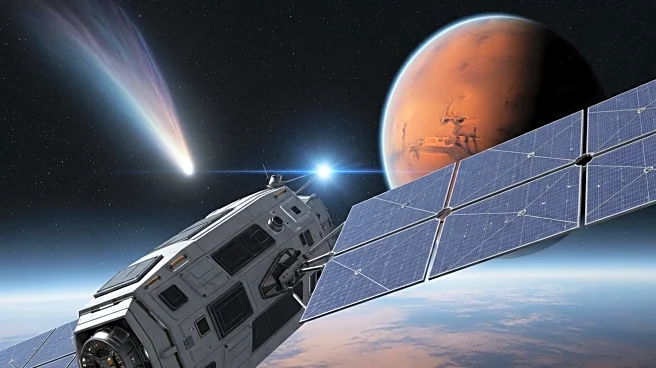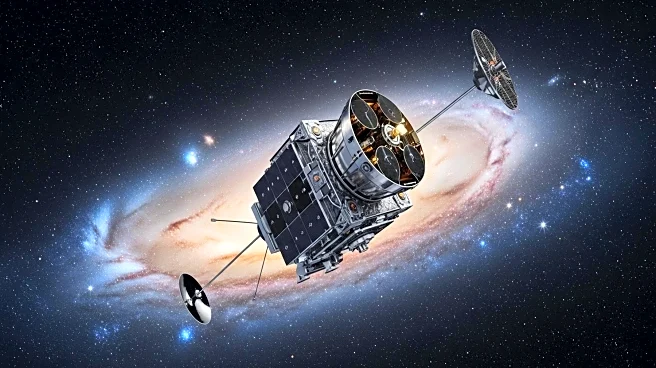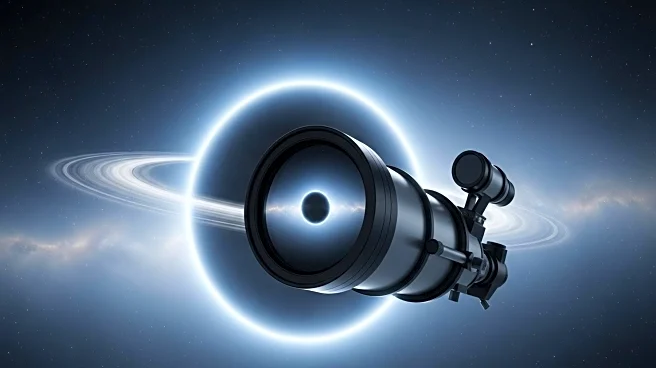What's Happening?
A new study led by Leiden Observatory and SRON has developed a unified model explaining the extreme jet streams observed on the giant planets Jupiter, Saturn, Uranus, and Neptune. The research, published in Science Advances, reveals that fast rotating convection in the atmospheres can drive both eastward and westward jet streams, depending on atmospheric depth. This discovery resolves the longstanding mystery of differing wind directions among these planets, suggesting a common mechanism governs their atmospheric dynamics.
Why It's Important?
Understanding the jet streams on giant planets is crucial for comprehending planetary atmospheres and climates, both within our solar system and beyond. The model provides a framework for studying atmospheric processes on exoplanets, potentially aiding in the identification of habitable conditions. The insights gained could also inform future space missions, improving predictions of atmospheric behavior and aiding in the design of spacecraft capable of withstanding extreme conditions.
What's Next?
Researchers are utilizing data from the Juno spacecraft to find evidence supporting the proposed mechanism within Jupiter's atmosphere. This validation could lead to broader applications of the model in studying other planetary systems. The team aims to extend their research to exoplanets, exploring the diversity of atmospheric conditions across the galaxy. Continued investigation will enhance our understanding of planetary formation and evolution.
Beyond the Headlines
The study not only advances scientific knowledge but also highlights the interconnectedness of planetary systems. By understanding the fundamental processes driving atmospheric dynamics, scientists can better predict climate patterns and potential changes. This research underscores the importance of international collaboration in advancing space exploration and expanding our understanding of the universe.


